News
EPJ B - New Editorial Board Member appointments
- Details
- Published on 12 August 2021
The Publishers and Editors-in-Chief of EPJB: Condensed Matter and Complex Systems are delighted to announce the appointment of three new members of the Editorial Board: Prof Veronica Barone of Central Michigan University, Mount Pleasant, USA; Prof Sanghamitra Neogiof the University of Colorado, Boulder, USA; and Dr Philipp Hövel (starting September 1st), of the School of Mathematical Sciences, University College Cork, Ireland.
EPJ D Highlight - Understanding the ionisation of proton-impacted helium
- Details
- Published on 06 August 2021
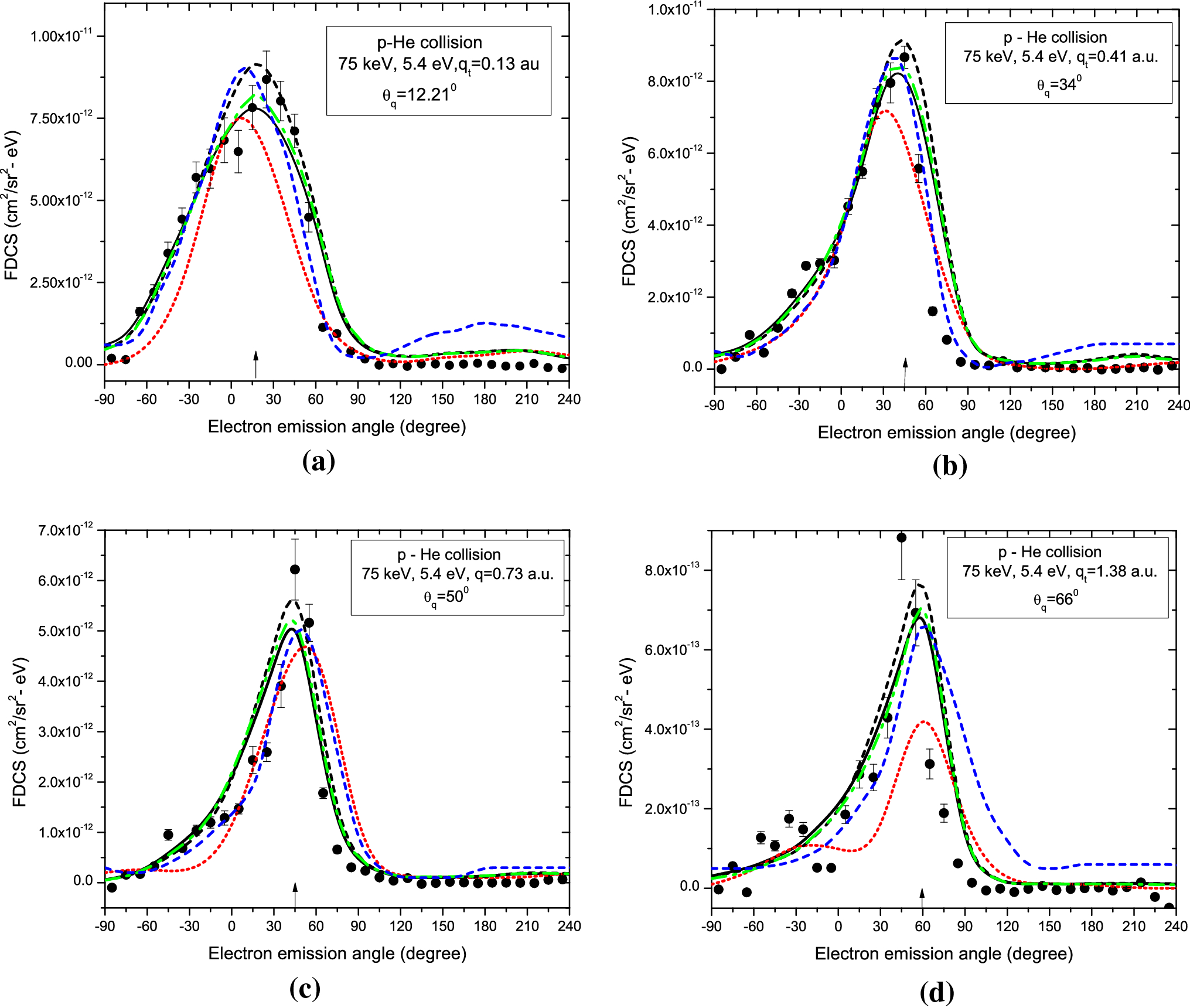
Advanced mathematical analysis of the ionisation of a helium atom by an impacting proton has revealed where discrepancies arise between experiments and existing theoretical calculations of the process
When an atom is impacted by a fast-moving proton, one of its orbiting electrons may be knocked away, leaving behind a positively-charged ion. To understand this process, it is important for researchers to investigate distributions in the angles at which electrons travel when knocked away. In a new study published in EPJ D, M. Purkait and colleagues at Ramakrishna Mission Residential College in India have clearly identified particular areas where discrepancies arise between the angular distributions measured in theories and experiments.
EPJ D Highlight - Uncovering fragmentation differences in chiral biomolecules
- Details
- Published on 05 August 2021
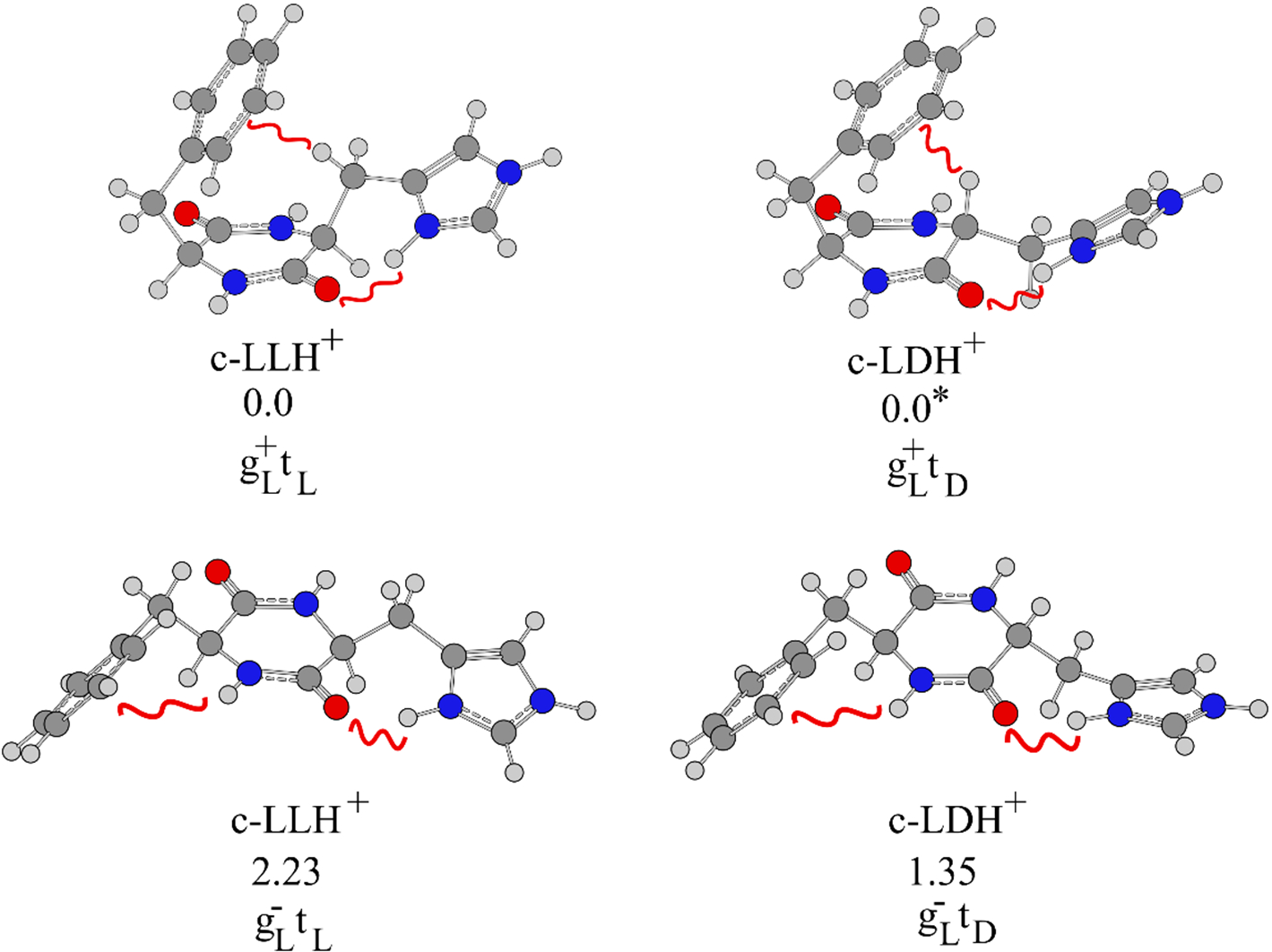
By combining mass spectroscopy with further analytical and simulation techniques, researchers have revealed key differences in the fragmentation of dipeptide biomolecules with different chiral structures
‘Chirality’ describes the difference in structure between two molecules that are, or are close to being mirror images of each other. Although their chemical formulae are identical, these molecules have slightly different properties, making it useful for chemists to distinguish between them. The technique of ‘mass spectroscopy’ can provide detailed information about their complex molecular structures, but it is also blind to any differences between their chiral structures. In new research published in EPJ D, a team led by Anne Zehnacker at Paris-Saclay University combine mass spectroscopy with a range of other simulation and analytical techniques, allowing them to distinguish between two chiral forms of a dipeptide biomolecule.
EPJ Plus Highlight - Beer mats make bad frisbees and why it matters
- Details
- Published on 05 August 2021

Whilst modelling the forces acting upon a thrown beer mat, physicists discover why flat discs have such poor flight potential.
The question ‘Why do beer mats make bad frisbees?’ may initially seem like something of an odd inquiry to spark research. Yet, by considering the physical properties of such a common everyday item, physicists can create models that also describe the behaviours of a wide range of objects. In a new paper published in EPJ Plus, Johann Ostmeyer, the University of Bonn, Germany, and his co-authors look at the dynamics that give beer mats poor fight potential.
EPJ H Highlight - Revisiting Clebsch’s early papers
- Details
- Published on 03 August 2021

New analysis of two recently translated papers, first published in the 1850s, assesses the early methods used by Alfred Clebsch to describe the flow of incompressible fluids, and explores their impact on active areas of cutting-edge research
Alfred Clebsch is widely considered to be one of the fathers of algebraic geometry. Born in Prussia in 1833, he completed his PhD at just 21, and went on to publish two important papers soon afterwards, in 1857 and 1859. In these studies, he introduced mathematical constructs that are now called ‘Clebsch variables,’ which describe the velocity field of a fluid, and which are widely cited. Now, a team of researchers in France, Germany, the US and Brazil present the first English translations of Clebsch’s two early papers after more than 160 years. In an accompanying study published in EPJ H, important new explanations are provided for the difficult language of the papers.
EPJ ST Highlight - Using particle accelerators to investigate the quark-gluon plasma of the infant Universe
- Details
- Published on 29 July 2021
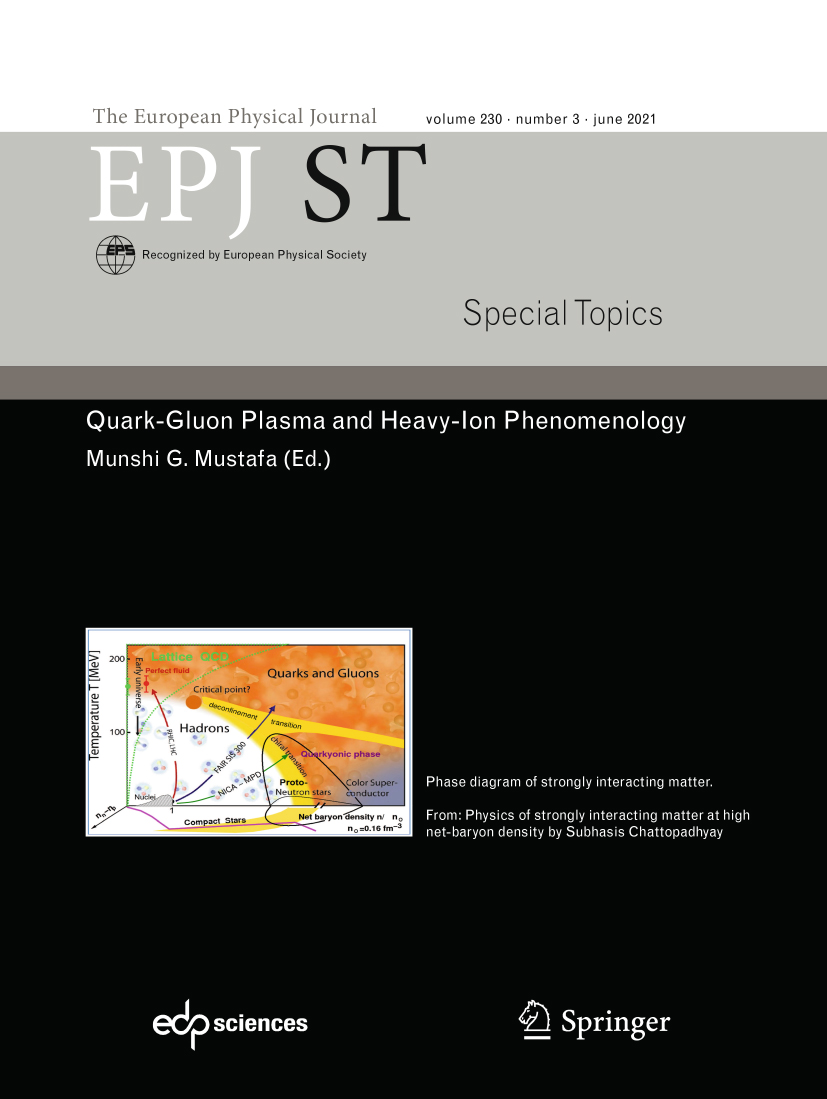
In the early stages of the Universe, quarks and gluons were quickly confined to protons and neutrons which went on to form atoms. With particle accelerators reaching increasingly higher energy levels the opportunity to study this fleeting primordial state of matter has finally arrived.
Quark-Gluon Plasma (QGP) is a state of matter which existed only for the briefest of times at the very beginning of the Universe with these particles being quickly clumped together to form the protons and neutrons that make up the everyday matter that surrounds us. The challenge of understanding this primordial state of matter falls to physicists operating the world’s most powerful particle accelerators. A new special issue of EPJ Special Topics entitled ‘Quark-Gluon Plasma and Heavy-Ion Phenomenology’ edited by Munshi G. Mustafa, Saha Institute of Nuclear Physics, Kolkata, India, brings together seven papers that detail our understanding of QGP and the processes that transformed it into the baryonic matter around us on an everyday basis.
EPJ ST Highlight - Gaining insight into the Universe’s most powerful objects and events
- Details
- Published on 28 July 2021
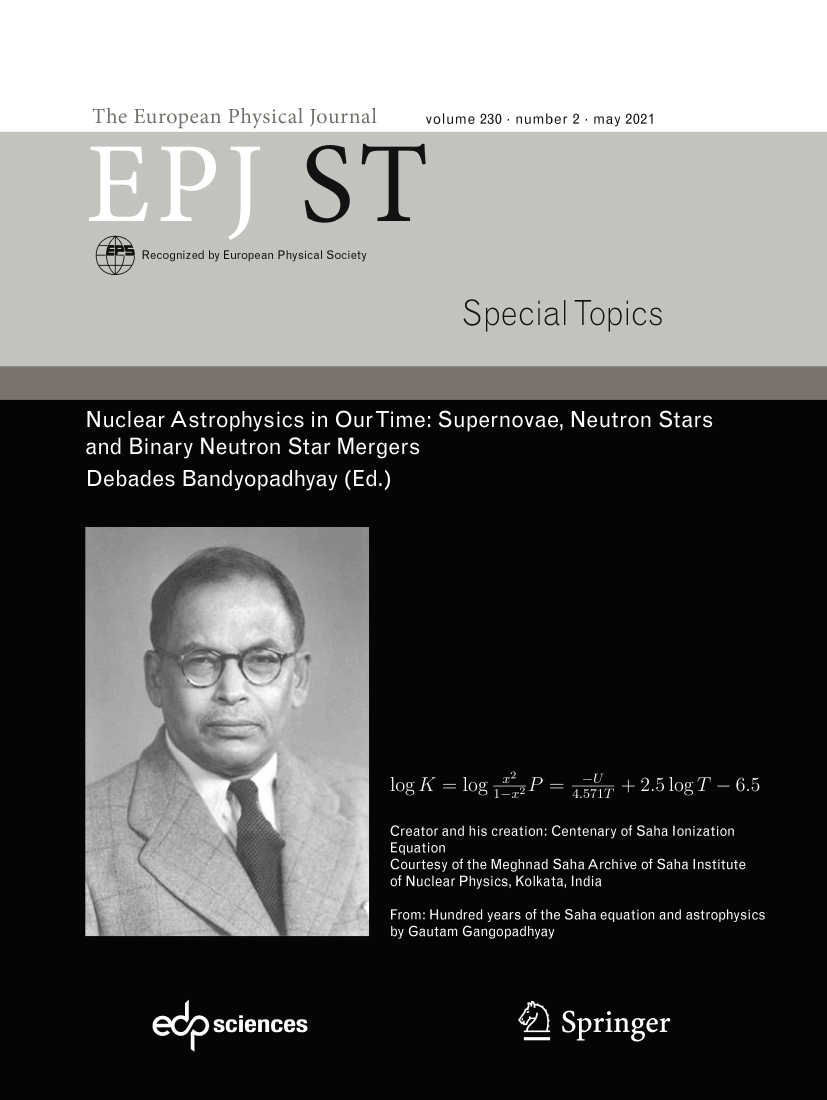
A timely new collection reminds us that even in times of great hardship, our understanding of the Universe’s most explosive, spectacular and mysterious events and objects continues to grow
Supernovas, neutron stars, and neutron star mergers are some of the Universe’s most powerful events and mysterious objects, leftover after the burning of nuclear fuel is exhausted within massive stars. A new special issue of EPJ Special Topics entitled ‘Nuclear astrophysics in our time: supernovae, neutron stars and binary neutron star mergers’ edited by Debades Bandyopadhyay, Saha Institute of Nuclear Physics, Kolkata, India, brings together several papers that document our understanding of these astrophysical events and compact stars.
EPJ A Highlight - Celebrating the life and work of Mahir Hussein through cutting-edge research
- Details
- Published on 27 July 2021

A new collection of papers focusing on the dynamics of nuclei pays fitting tribute to Iraqi/Brazilian physicist Mahir Saleh Hussein.
On 16th May 2019 Iraqi/ Brazilian physicist Mahir Saleh Hussein passed away leaving behind a distinguished career of achievements in a broad range of physics disciplines. There is, perhaps, no better way of paying tribute to this influential figure in physics than presenting a collection of cutting-edge, peer-reviewed papers. A special edition of EPJ A, edited by Valdir Guimarães, Universidade de São Paulo Instituto de Física, Brazil, Carlos Bertulani, Department of Physics of the Texas A&M University-Commerce, USA, and Nicolas Alamanos, Deputy Director of the Institute of Research into the Fundamental Laws of the Universe (IRFU), France, brings together a collection of papers focusing on nuclei clustering and dynamics as a fitting tribute to Hussein.
EPJ QT Highlight - Steps towards post-quantum security by Aleksey Fedorov
- Details
- Published on 21 July 2021

Prof. Dr. Aleksey Fedorov is a Junior Principal Investigator at the Russian Quantum Center, Professor of Physics at Moscow Institute of Physics and Technology, and founder of startup companies in quantum technologies. His research is related to quantum information technologies and quantum many-body physics. His paper about world-first quantum-secured blockchain was covered in MIT Technology Review, Business Insider, Forbes and put in the list of "the hottest top 5%" of all research outputs by Altmetrics. Aleksey was selected for ’30-under-30’ for Forbes Russia.
Life in our society is suffused with information technologies. Many of our activities — ranging from online shopping and chatting to operating production environments and management systems — are based on collecting, processing, and transmitting data. One of the key aspects in this regard is security. Surely, the history of the problem of ensuring information security is virtually as long as human history. However, for modern society the issue of information security has become truly vital: unauthorized access to various kinds of information could lead to major losses, including financial losses and loss of reputation, for governments and businesses alike.
Continue reading Aleksey Fedorov’s post here.
EPJ E Highlight - Simulating microswimmers in nematic fluids
- Details
- Published on 12 July 2021
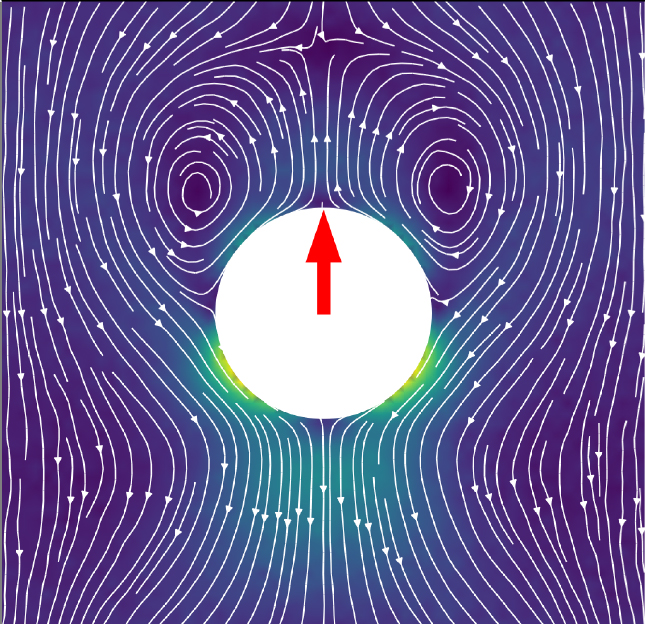
A combination of two simulation techniques has allowed researchers to investigate how swimming microparticles propel themselves through ‘nematic liquid crystals’ – revealing some unusual behaviours
Artificial microswimmers have received much attention in recent years. By mimicking microbes which convert their surrounding energy into swimming motions, these particles could soon be exploited for many important applications. Yet before this can happen, researchers must develop methods to better control the trajectories of individual microswimmers in complex environments. In a new study published in EPJ E, Shubhadeep Mandal at the Indian Institute of Technology Guwahati (India), and Marco Mazza at the Max Planck Institute for Dynamics and Self-Organisation in Göttingen (Germany) and Loughborough University (UK), show how this control could be achieved using exotic materials named ‘nematic liquid crystals’ (LCs) – whose viscosity and elasticity can vary depending on the direction of an applied force.




